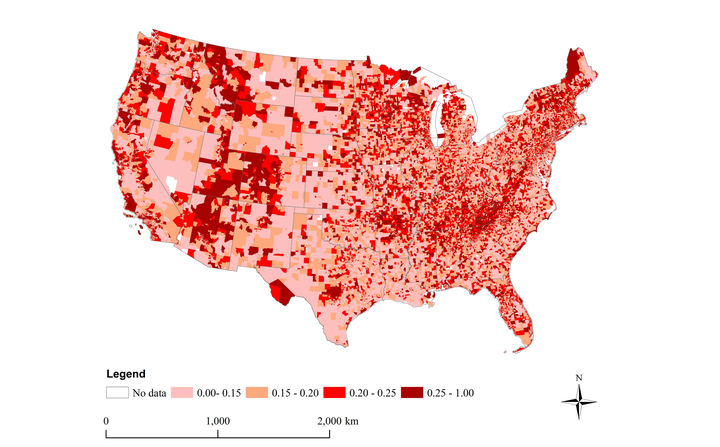
For just 140 characters, a tweet can say a lot.
A new study published in the Journal of Medical Internet Research Public Health and Surveillance found that tweets really might be representative of how healthy a community is overall.
Researchers at the University of Utah reviewed 80 million tweets, a random sample equivalent to one percent of the Twitter posts made over the course of a year. They sorted through geotagged messages that mentioned food, categorizing each food mentioned on a scale from healthy to unhealthy. Finally, the tweets were cross-referenced with area codes and census data to see what they might indicate about the actual health in a given neighborhood.
The findings suggest that poorer communities and areas with a higher number of persons per household were less likely to tweet about healthy food. We know from previous research that food deserts and access to affordable, nutritious food can be a challenge for low-income families, but the researchers aren’t entirely sure why larger households correlate with fewer tweets about nutritious food.
But the survey didn’t just look at food choices. Researchers also looked into tweets about happiness and activity.
“We thought since social media is so pervasive and publicly available, it could be used for indicators such as happiness and health,” Quynh Nguyen, lead study author and an assistant professor at the University of Utah College of Health, said to The Huffington Post. “Health is more than the absence of disease, it’s a sense of wellbeing.”
Nguyen’s team collected Twitter mentions of healthy behaviors such as “walk/walking,” “dancing,” “golf” and “swimming” or “pool.” They also tracked for words like “laughter,” “joy” and “rainbow” to suss out happy posts. The graph below maps the study’s happy tweets; darker areas represent a higher percentage of happy tweets.
“We found that neighborhoods with social and economic disadvantage, high urbanicity, and more fast food restaurants may exhibit lower happiness and fewer healthy behaviors,” the team wrote.

Nguyen’s study underscores the potential of social media platforms to provide indicators about public health.
“Health surveys are expensive to collect,” she pointed out. “Twitter provides an alternative, supplemental data set and you can poll for different activities.”
This method is not without flaws, however, and a result, neither is the report. Nguyen acknowledged that Twitter users are not representative of an entire population, as tweets are usually sent by people between ages 18 and 49.
In addition, she said, “There might be the issue of social modeling, where if you see someone in your network post something, you might do it, too.” In other words, if you notice your friend next door posted about ice cream, you may do the same, even if your diet largely consists of fruits and vegetables.
While further research could refine a this method, the report certainly gives our social media feeds new context. As you look at posts based on a specific location, they really might be a true pulse of the community.
